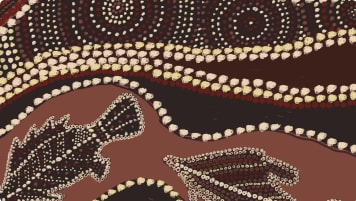Stranded in the Kimberley: A True Story of Six Men's Struggle for Survival
Colonial exploration was dangerous, a story of misadventure along the Kimberley coast from Wyndham hoping to reach Broome. Sets the history for Senior couples and mature solo travellers on a small group educational tour.
30 Aug 21 · 16 mins read

Stranded in the Kimberley, Western Australia
By Marco Stojanovik
In the early hours of 16 October 1920, a small pearling lugger named Henry departed from the wharf at Wyndham, in Western Australia’s far north, destined for the pearling port of Broome. Onboard, Captain John Morgan Johnston and his crew five had little idea that they were in store for an epic Kimberley adventure.
Less than two weeks after departure, their lugger ran was wrecked near Cape Voltaire, leaving the men stranded. With a castaway camp set up at the Cove, two journeys ensued to send for help: a dinghy voyage, likened to that of Bass and Flinders, traversing over 400 km to Cape Leveque on the Damper Peninsula; and an ill-fated over-land trek through the interior of the Kimberley region.
This article explores these significant journeys and their outcomes as background reading for Odyssey Traveller’s Kimberley tour for senior and mature travellers in small groups. The information is sourced from Rod Dickson’s A Voyage of No Importance.

The Voyage Begins
In 1920 Captain Johnston refitted the pearling lugger Henry with two purposes in mind: to explore the Kimberley coast for minerals, in particular gold; and to sell the lugger in Broome, as prices had gone up since the war and there was a profit to be made. He fixed a few tiny leaks and applied a fresh coat of paint, and the boat began to take on a new look.
With the vessel almost ready for sea, Johnston began to look for a crew. His first recruit was Captain Henry Scott in Broome, signed on as pilot and mate. Scott was a very experienced seaman who had sailed the Kimberley coastline for many years and knew almost every bay and inlet.
Making his way from Broome to Wyndham, Scott brought along two men to also join the crew: James Robert, who having failed on the Western Australian goldfields was looking for world; and Lancelot Pascoe, a professional sail maker.
Johnston himself recruited the remaining two men in Wyndham itself. Gordon Stanley signed on as cook to work his passage. And Frank Bass joined desiring to head north to investigate the possibility of setting up a fish curing plant.
Of the six, Captain Henry Scott was the most interested in exploring for minerals. Years before, an Aboriginal man had given him a large nugget of gold, pointing vaguely to the east when asked through an interpreter where the metal had come from. Legends of gold hidden in the deep recess of the Kimberley gorges had abounded since the convict days, with many a man chasing the riches.
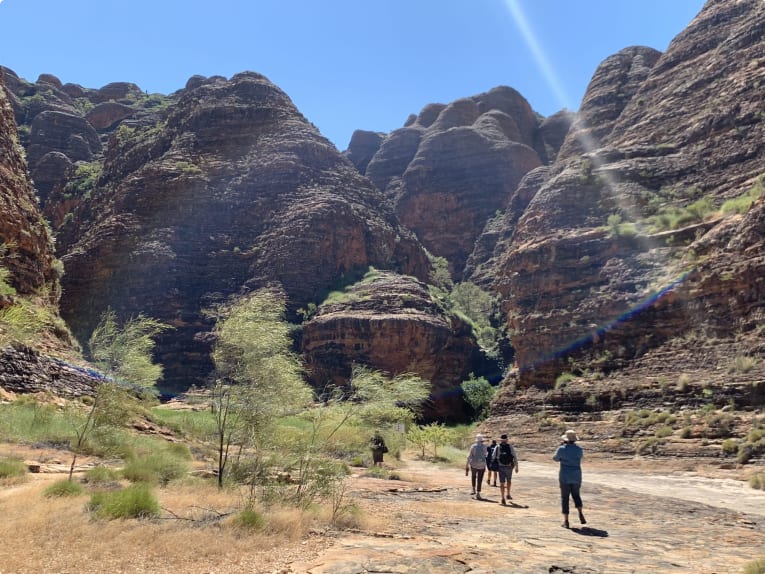
At Wyndham, the repairs were completed on the Henry, now seaworthy. The crew brought her to the Wyndham jetty to load stores and water for the coming voyage, including enough food to last the men two months, as well as a .303 rifle and a German-made Mauser repeating pistol for protection.
The Henry finally sailed out of Wyndham on October 16. On board the crew carried an important letter for a Sergent Johnston at the Drysdale River Mission regarding the recent murder of two men (Gustav Anton Ulbrich and Alfred Redland) on Mary Island, as well as a packet of letters from the locals for transhipment at Broome to the next Singapore bound steamship.
After clearing the tidal estuary of Cambridge Gulf, the lugger passed Lacrosse Island and steered north-westwards along the coast towards Leseur Island, where, as darkness was failing rapidly, they anchored for the night and enjoyed a well-earned rest. The next morning, they sailed north and west to west to Cape Londonderry, which they rounded late in the afternoon. Then, just before nightfall, Captain Johnston brought the lugger to anchor in Napier Broome Bay, just off the Drysdale River Mission.
At the mission, the men found that the letter they carried for Sergeant Johnston was no longer valid, as the alleged murderers of Ulbrich and Redland had already been arrested. The crew of the Henry nevertheless had friends and acquaintances at the Mission and decided to lay at anchor in the bay for a week or so as there was no urgency to beginning the next leg of their voyage.
The Wreck of the Henry
After six days anchored at the Drysdale River Mission, Captain Johnston decided it was time to leave and head on down the coast to Broome. Bidding farewell to their friends, they sailed out of Napier Broome Bay, past the Sir Graham Moore Islands and crossed the mouth of Vansittart Bay to anchor for the night in Freshwater Bay on the western shores of Vansittart Bay. Next morning, after an early bite to eat and a mug of tea, they left this anchorage and proceeded directly to Cape Bougainville and then on to Hecla Island in Parry Bay where they again anchored for the night.
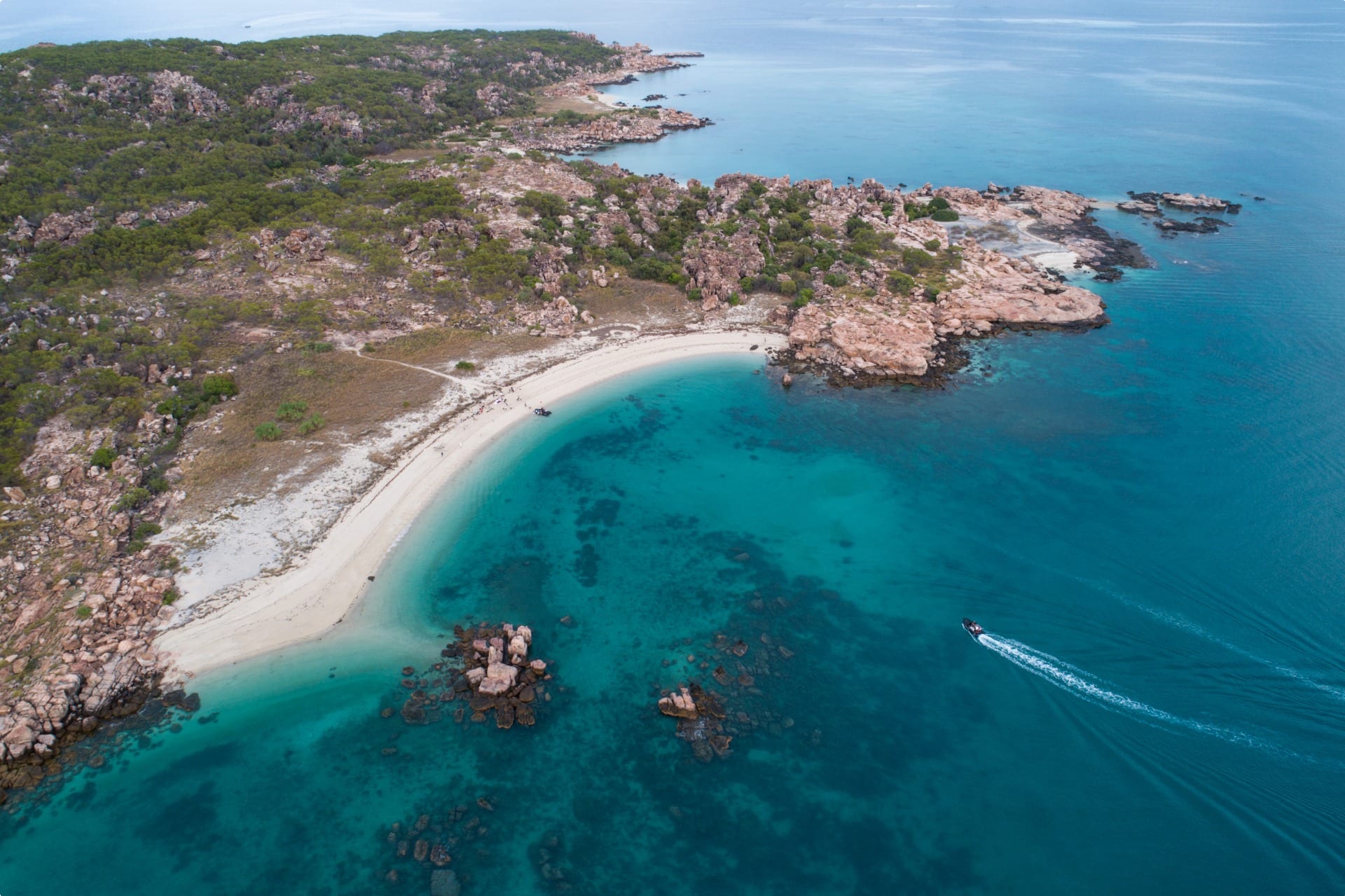
The Henry departed from this anchorage at Hecla Island on 28 October 1920, making a smart run across the entrance to Admiralty Gulf, heading for the Voltaire Passage, north of Cape Voltaire. The region is a rock, island, and reef strewn stretch of water, with three difficult passages leading from seawards to the admiralty gulf. Of the three, the Voltaire Passage is the most treacherous, being very narrow and difficult to negotiate.
As the Henry and her crew began the passage, a strong ebb tide of 6 knots was running and the small boat was carried swiftly towards the west. Being late in the afternoon, the lowering sun was directly in their eyes making it difficult to spot the lurking dangers. Directly ahead of the vessel lay an isolated and submerged patch of rock and it was on this that the Henry impaled herself.
The jagged rocks tore through her stout timbers, and with water pouring rapidly in through her wounds, the crew had little time but to abandon her. Luckily, they had on board a newly built 12-foot (4 m) dinghy; with the rugged shore of Cape Voltaire only a half mile away the crew rowed for the land as rapidly as possible, making four return trips to the wreck before nightfall to salvage as much of the stores as possible.
With two men rowing back and forth the others ashore prepared a campsite by clearing the spinifex and scrub from the immediate area and getting a fire started. Sitting around the fire later that night the men took stock of the situation and discussed their options. In all, they managed to save enough stores to last them about a month if they were careful with their rationing.
Cape Voltaire, where the castaways were encamped is about 150 miles (240kms) by land from the Drysdale River Mission and about 200 miles (320kms) from the Presbyterian Mission situated at Port George IV, to their south. It would be foolish to walk to either, with no adequate maps and rugged and isolated land. However, there was also little chance of being rescued by a passing vessel in the extremely remote area, especially with it getting close to the onset of the wet season. Instead, Captain Johnston decided that two men would have to take the dinghy and row it to the Presbyterian Mission at Port George IV in Camden Sound for help.
Related Tours
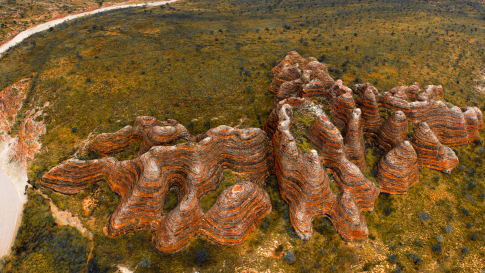
19 days
Sep, Apr, May, Jun, Jul +2Kimberley, Purnululu, Tiwi Islands and Arnhem Land
Visiting Northern Territory, Western Australia
Small group tour touring most of the Australian territory, travelling through the outback and visiting many of the famous sights as well as off the beaten track locations, giving you the opportunity the explore and meet our people in the most remote locations and far north Kakadu and the Kimberley.
From A$14,995 AUD
View Tour
14 days
Apr, Jul, SepKimberley and Pilbara explored by air
Visiting Northern Territory, Victoria
Small group air charter tour of the Kimberley and Pilbara for senior and mature couples and single travellers. Learn about Purnululu, Bradshaw art, visit Derby, Broome and Alice Springs.
From A$24,695 AUD
View Tour
13 days
May, Jun, Jul, Aug, SepSmall group tour of Australia's Kimberley
Visiting Western Australia
Escorted small group tour of the Kimberley. We explore and visit The Bungles, Bell Gorge, Mitchell plateau & Halls Creek in the dry season. Amazing landscapes intertwined with Aboriginal communities resident more than 45,000 years.
From A$15,390 AUD
View Tour
days
Apr, May, Jul, Aug, Sep +2Central and Western Australia by Air
Visiting Northern Territory, Western Australia
Small group escorted air tour of Central and Western Australia, where the coaches have yet to reach. Outback Australia, Aboriginal art, Standing stones, Derby, Broome, Tanami desert, Kununurra explored for mature couples and single travelers.
The Dinghy Voyage
To the Presbyterian Mission at Port George IV
Captain Johnston selected Captain Henry Scott and Lancelot Pascoe for the task due to their expert knowledge of the Kimberley coastline. On 2 November 1920, four days after the wrecking of the Henry, the two men loaded their share of supplies into the small dinghy, said their goodbyes, and pushed off to row for the Presbyterian Mission at Port George IV. They were to request the mission lugger, the W.S. Rolland, be put to sea and come to the rescue of the four who remained behind.
With great perseverance, facing strong ebb tides, choppy seas, rowing into the wind, and at one point even passing a huge saltwater crocodile, the men eventually reached Port George IV on 8 November. The only inhabitants of this area were the Aboriginal people and one white man, Mr. N.A. Paull, the Presbyterian missionary in charge of the station. The actual mission station was situated three miles inland from the harbour at a place called Kunmunya, on a rising piece of land with sweeping views.
On their arrival at the Mission, Scott and Pascoe were met with disappointment as the they discovered that the mission lugger was at Broome undergoing repairs. To make things worse, there were no stores to spare as the missionary was on reduced rations himself and he was not sure just when the lugger would return with more.
To the Sunday Island Mission
After recouping for two nights and a day at the mission, Scott and Pascoe decided to keep on rowing, heading for the Sunday Island Mission in King Sound near Cape Leveque – the closest chance of human habitation and assistance.
They made slow progress over the next three days due to adverse tides and were forced to sleep in the dinghy on the nights of 12 and 13 November as there were no safe landing places to be seen. They made up for their slow start on the 14th and 15th, covering 50 km and 40 km respectively towards their destination. However, in order to do so they had to keep rowing from early morning to midnight; and on the night of the 14th, while landing in the dark on an unknown beach, Scott trod on a razor oyster shell and badly cut his foot.
Kept back by south-westerly winds, they spent another night bobbling around on the sea at the whim and mercy of the elements on the 16th. They then spent the next night camped on a small island near High Island. They had rowed eighteen miles in a direct line that day the actual distance was probably doubled.
By this point, the two men were just about done. The amount of time sitting on the rough wooden thwarts handling the oars was beginning to tell on their posteriors which were raw and chafed. Food and water rations were at a low ebb and were being forced into exceedingly hard labour with little nourishment to sustain their efforts. Nevertheless, they were at the entrance to King Sound and the end was in sight.
The next two days they attempted to cross the Meda Passage, but the tide carried them a long way north past the Roe Islands. Here, they were forced into towing the dinghy from the rocks to get around West Roe Island. By now food and water were in extremely short supply, Scott’s foot had become infected and was causing him agonising pain and both men were at the point of exhaustion.
Their inner strength, however, kept them going, and at long last the mission was reached safely in the late afternoon of the 19th. Here though, they received more bad news: the mission lugger had also been badly damaged on the reefs and was away for repairs at Broome, its return date uncertain. The missionaries themselves in short supply of necessary stores were only able to give the traveller a loaf of bread to sustain them on the next part of their ordeal.
Success at Last
So, once more the intrepid pair set out, leaving the Sunday Island Mission on the morning of the 20th. This time, by hard rowing, they managed to cross the Meda Passage to arrive at Mr O’Grady’s cattle property situated on Karratha Bay. Again, however, they were in for disappointment as they learnt that Mr O’Grady and his boat were away in Broome.
Rowing on again, that afternoon they eventually reached the cattle station homestead of the Hunter Brothers. The brothers were absent but to delight of Scott and Pascoe there was a 22 foot (7m) open sailing boat on the beach.
The men then walked back along the beach to a nearby warehouse at Cape Leveque, where they informed the keepers of their plight and requested them to get news to Broome as soon as possible concerning the shipwreck. Obtaining some fresh provisions on credit from the keepers, they returned to the beach opposite Hunter’s homestead to prepare the whale boat for the return journey.

Setting sail from the Hunters’ place on November 23, the wind was almost constantly behind them. Making incredibly good time, they arrived back at the camp on Cape Voltaire on December 2, only ten days later. Yet, on their arrival they were surprised to be greeted by only two of the four men they had left behind – Captain Johnston and Gordon Stanley.
The Castaways’ Camp
While Scott and Pascoe had been away, the four remaining castaways had set about making their lonely campsite more hospitable. To obviate the need to carry water from the nearby spring to the camp, the men had sunk a well beside the tent, striking an adequate supply of drinking water. They had also built drying and smoking racks for the hopefully expected surplus of caught fish to supplement their diet.
However, close to two months after the two rowers had departed on their mission, the castaways’ rations were in short supply. Strangely, few fish were caught, and they hadn’t trapped a single turtle. The men had secured a few stingrays but, although nourishing meat, it is not overly appetising. They had also managed to shoot three kangaroos to supplement their diet but realised that stopped at that, realising their bullets must be conserved for future eventualities.
Meanwhile, their sugar had run out, rice was almost finished, and flour was in short supply. Plus, the tobacco supply had to be rationed and was being supplemented by mixing it with tea leaves.
Unsurprisingly, their tempers were becoming shorter and personalities clashing, with arguments frequently arising over trivialities. The camp was now split into two parties of men. Frank Bass and John Smith formed an alliance, while Gordon Stanley sided with Captain Johnston in any argument or disagreement.
Bass and Smith had grown certain that Scott and Pascoe had been met with disaster on their coastal voyage, due to the length of time they had been absent. During one of their hunting trips inland and south of the cape, the two men managed to convince themselves that in order to get out of the Cape and get back to civilisation they would have to take matters into their own hands.
Bass & Smith Journey South
One final argument between the remaining four was enough to convince Bass and Smith that it was now time to leave the camp on Cape Voltaire and strike out on their own. The men took with them half of the remaining rations, which consisted of 36 pounds of four and one and a half pounds of tea. They also took the .303 rifle and thirty-five rounds of ammunition.
On 26 November, they climbed into two makeshift canoes. One was laboriously carved from the pithy trunk of a Boab tree, the other constructed of the pliant branches of the mangrove, bent and tied into a rough boat shape and then covered with sailcloth. After paddling for the entire day, they found a small beach and camped for the night.
The next day, however, safe landing beaches were few and far apart. As the wind arose, the tiny unstable crafts became unmanageable. Waves increased in height and the curling crests tossed heavy spray into the canoes. More and more water filled the tony boats until they were just awash, capsizing and sinking from under Bass and Smith. By luck, the two men were able to make it to the shallows of a nearby bay and managed to save the flour, although it was impregnated with salt, as well as their precious rifle and cartridges.
With their watercraft ruined, they decided they would have to walk to Drysdale River Mission in Napier Broome Bay, about 200 miles (320 kms) away. And so, they set out on a tiresome months-long journey.
First heading south along the Voltaire Peninsula, they then crossed the Mitchel Plateau, a fearsome country of tussock grass, interspersed with rocky areas and cut and riven with deep gorges and ravines. To stay reasonably near the coast would have meant crossing many saltwater creeks and inlets, all crocodile infested, and the men’s line of march would have been interrupted time and again to head inland and cross where the water was fresh and crocodile free.
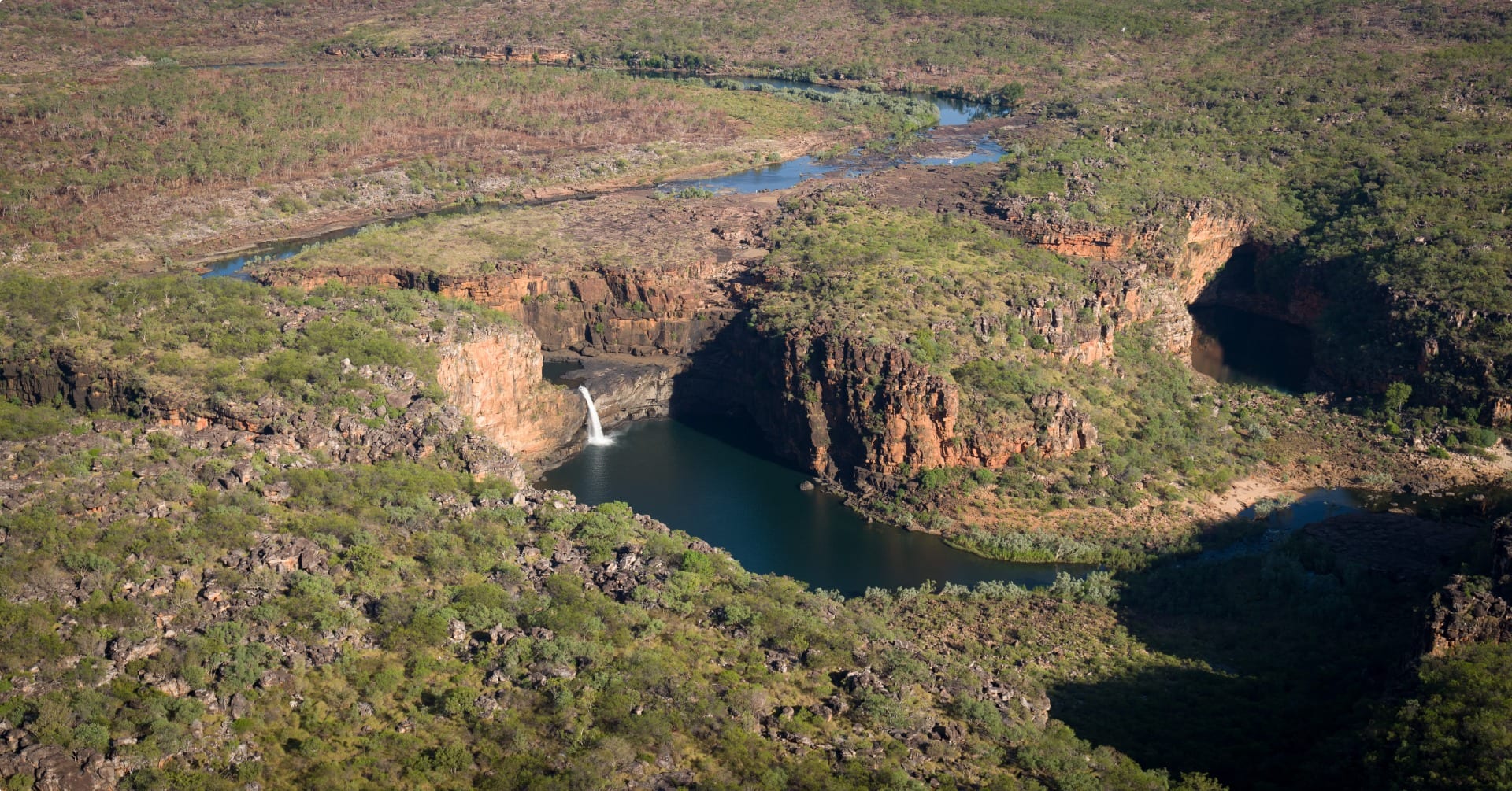
In just over a month, they reached Cape Pond, having covered 40 miles (65km) as the crow flies, which was more like 70 or 80 miles (120-130km) with all the detours they had to make. At this point, they still had more than 200 miles (320 km) to go.
They spent a few weeks at the Cape Pond camp to prepare themselves mentally and physically for the next stage of their journey. This stage took them southeast from Cape Pond along the northern shore of York Sound towards Mount Anderson and Prince Frederick Harbour at the eastern end of which lies the Hunter River.
It was now early March 1921 and the two men had been on the march for three months in the worst season of the year. The high humidity, temperatures and roughness of the country had had a debilitating effect on the men and taken a toll on their clothes and equipment, reducing them almost to nakedness. They were both also suffering from the onset of scurvy and their food supplies of flour and tea had run out, forcing them to rely on what they could catch and kill to keep alive.
It was at this time that they vanished.
The Search for Bass and Smith
Upon their arrival back at Cape Voltaire, Scott and Pascoe brought fresh supplies for the two remaining men. They stayed at the camp until 4 December 1920 and then, with all four safely aboard the borrowed boat, bid farewell to the castaways’ camp and set sail for Broome. They arrived on 17 December and soon after informed the police and other officials of their disaster and that two men were still missing in the wilds of the Kimberleys.
Anchored off Camp Voltaire, search parties were sent to comb the peninsula for any traces of the missing men. The canvas dinghy Bass and Smith had constructed was found drawn up out of the reach of the high tide, evidently by the local Aboriginal people, but there were no other traces of the men. Search parties striking inland across the Cape similarly failed to find anything and it was concluded that the men were not on the Cape.
Becoming increasingly worried about the lack of information about Bass and Smith, and as the authorities were hampered by distance from the capital, Captain Johnston set about to organise his own rescue party. He charted the pearling lugger Rex for the rescue mission, and with Gordon Stanley sailed from Broome on 11 January. At the missions at Beagle Bay and Lombardy, they picked up a crew of local Aboriginal people to assist with the search.
Arriving at Port George IV on January 21, the men went ashore and walked the three miles inland to the Kunmunya Mission station, where Stanley questioned the local Aboriginal people as to any news of the two lost men. He learnt that they had camped at Scotts Strait (cape Pond) and had stolen a kangaroo. However, with many contradictory reports coming in, Johnston and Stanley weren’t sure who to believe.
Johnston headed for Scotts Strait and found the remains of a campfire but there was no certainty it was the camp of Bass and Smith. The local Aboriginal people there, when asked in which direction the men took, pointed towards the Drysdale River Mission. Captain Johnson immediately headed for the Mission but to no avail. There was no trace of the men, and nothing had been heard of them.
Other searches continued to take place in the area and vessels travelling along the part of the coastline were requested to keep a good look for the men and ask any local Aboriginal people whether there was any news of their fate. Information trickled in, confirming that they had shot a kangaroo at Scotts Strait and with news that they had then been speared in retaliation. No further information was discovered about their whereabouts, however.
Then in August 1921, Captain Scott brought an Aboriginal man into Broome from Port George IV Mission who confirmed that Bass and Smith had been speared by a group of Aboriginal people somewhere near the Roe or Hunter Rivers. At this point, it was assumed that the two men were dead.
It wasn’t until 17 September 1921 that an official search party set out from Derby under instructions from the Police of Perth. In an interview with an Aboriginal man at the Port George IV Mission, it was alleged that the two white men had raided an Aboriginal camp, stole some kangaroo meat, and seized a gin to try to force her to guide them out of the wilderness to Port George IV. In response, a group of Aboriginal people had followed the men and speared them while they were having a midday rest along the Hunter.
On 27 October, the search party raided a camp on the Price Regent River where they found three witnesses to the murders. They told the search party that the white men had been billed by six natives and pointed towards their camp on the south side of Prince Frederick Harbour.
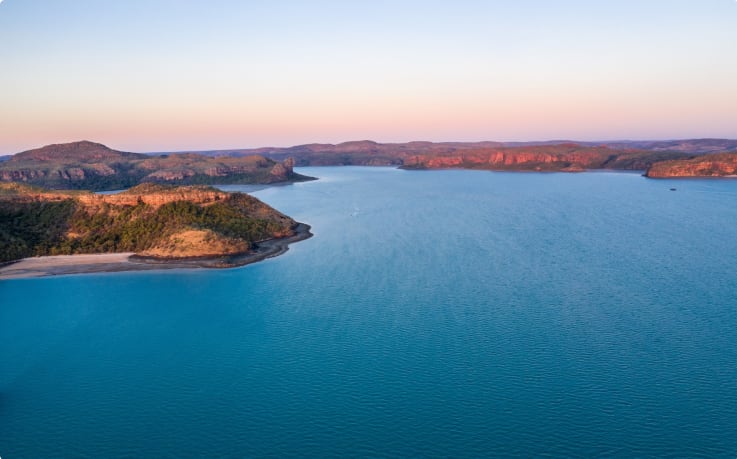
With this information, they arrested two men – Pinchedna and Carrawatta – who both admitted to killing Bass and Smith at the mouth of the Hunter River. Despite showing where they had killed and buried the two men, however, the bodies were never found.
Tour of the Kimberley
Odyssey Traveller visits the Kimberley region as part of our Tour of Australia’s Kimberley and our Outback Tour of the Northern Territory and Western Australia. Odyssey Traveller’s outback small group package tours are designed especially for mature and senior travellers who want an authentic experience of the fascinating Kimberley region.
Our Tour of Australia’s Kimberley begins and ends in the city of Broome, home to iconic Cable Beach, dinosaur remains at Gantheaume Point, a world-famous bird sanctuary at Roebuck Bay, and a fascinating history as a centre of pearling. From Broome, we head along the pristine Indian Ocean Kimberley coast and then turn along the Gibb River Road, making side trips to Windjana Gorge National Park and Tunnel Creek National Park, beautiful Bell Gorge (particularly verdant in the wet), and the easily accessible Galvans Gorge. We head onto the Mitchell Plateau – for many the last frontier of the Australian outback – to admire ancient Aboriginal rock art and the vast Mitchell Falls.

Back on the Gibb River trail, we spend the night at El Questro, near the Northern Territory border, a wilderness park based around Emma Gorge, Chamberlain Gorge, and the Pentecost River. El Questro offers a range of accommodation, from tented cabins to luxury suites in the old El Questro station. Leaving the North Kimberley, we pass Kununurra and Lake Argyle by and make a day tour to Purnululu National Park, where we see the Bungle Bungle range, Piccanniny Creek lookout, Echidna Chasm and Cathedral Gorge. Finally we return to Broome and the West Kimberley, passing through the historic towns of Halls Creek and Fitzroy Crossing.
Our Outback Tour of the Northern Territory and Western Australia explores the Kimberley, Purnululu, Tiwi Islands and Arnhem Land. The tour heads out from Darwin to Timber creek, before then heading west through to Kununurra, and delving into Western Australia’s iconic Kimberley region. We then book a light aircraft to visit and stay at Purnululu.
Returning to Kununurra you enjoy a full day scenic flight and tour of the Kimberley taking in icons such as Mitchell falls. After 5 nights in Western Australia, your small group tour returns to the Northern Territory transferring to Katherine and to Jabiru in the UNESCO listed Kakadu National Park. After 3 days exploring the park, the group takes a flight to Nhulunbuy/Yirrkala in the incredible Arnhem land. Returning to Darwin after 6 nights in these amazing UNESCO parks, the group travels with their guide travel out to the Tiwi Islands for 2 nights before returning to Darwin.

Articles about Australia published by Odyssey Traveller:
- Uncovering the Ancient History of Aboriginal Australia
- Aboriginal Land Use in the Mallee
- Understanding Aboriginal Aquaculture
- Mallee and Mulga: Two Iconic and Typically Inland Australian Plant Communities (By Dr. Sandy Scott).
- The Australian Outback: A Definitive Guide
For all the articles Odyssey Traveller has published for mature aged and senior travellers, click through on this link.
External articles to assist you on your visit to the Kimberley:
Related Articles

Aboriginal Rock Art in the Kimberley, Australia
The Kimberley is explored on a small group tour for mature and senior travelers, couples or singles. Both Aboriginal community is studied and an appreciation of the wet and dry seasons. This guide on the Kimberley assists the traveler as you start from Broome and travel round via Halls creek and Purnunulu national park over some 17 days in a group of up to 12 people.

Alexander Forrest & Early Development of the Kimberley Cattle Industry
Article about Alexander Forrest, a cattleman who made a difference in the Kimberley. Forms part of a small group tour for mature and senior travellers into Outback Australia for couples and solo travellers.

George Grey's Kimberley Expedition
Article on Western Australia about the Colonial explorer George Grey. Supports small group tours for mature couples and solo travellers of the Kimberley and places of interest such as Wyndham and its pastoral history. The Kimberley is where the first Australian arrived.
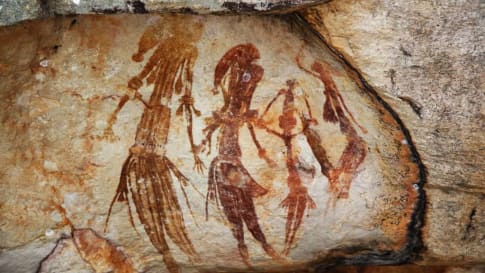
Gwion Gwion Rock Paintings (Bradshaw Art)
Bradshaw's discovery of rock art in the Kimberley remained a challenge for many decades .This article for small group tours of senior couples and solo travellers into the Kimberley provides information about the rock art and the re-discovery.
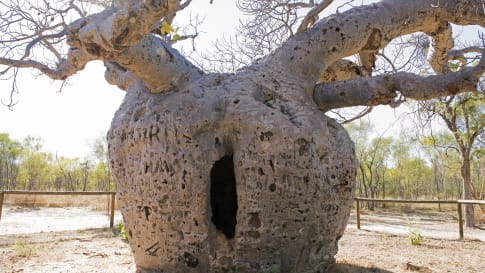
Kimberley Boab Tree
Boab trees are a wonder. Article for mature and senior travellers about this distinctive tree in Western Australia. Join a small group tour for couples and solo travellers exploring the Kimberley.

Kununurra, Western Australia
Explore the sights and history of Kununurra, with its spectacular lakeside beauty and outback charm, Kununurra is one of the Kimberley's most popular highlights. Odyssey offers small group tours for mature and senior travellers, couples, and solo travelers to Australia and Western Australia.
